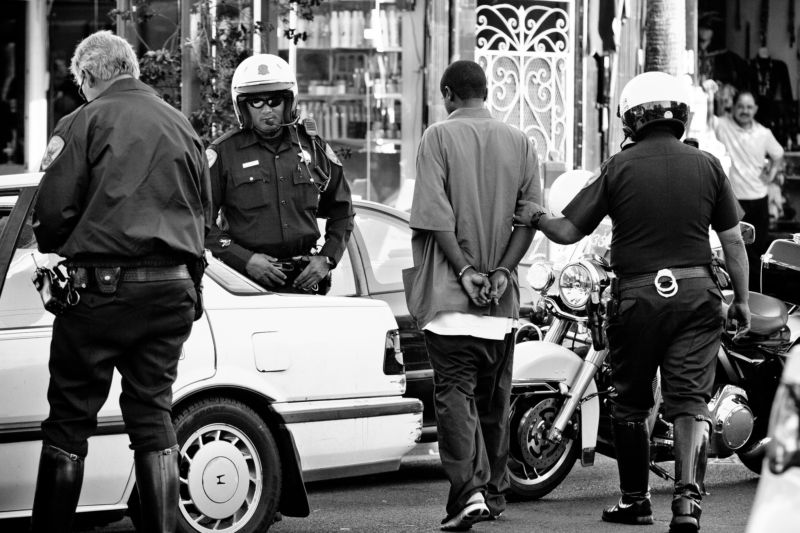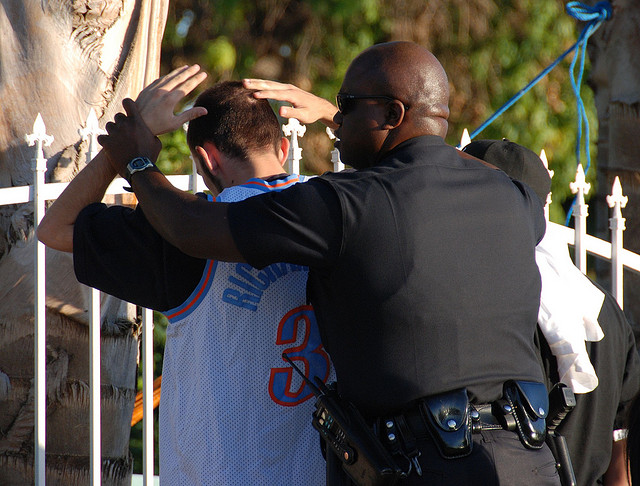
Anyone who has ever watched an American crime movie or television show can practically recite the Miranda warning by heart, even if they don’t know its official name.
You have the right to remain silent. Anything that you say or do can be used against you. You have the right to an attorney. If you cannot afford one, one will be provided to you. Do you understand these rights as I have read them to you?
The basic idea behind the Miranda warning is to provide someone being arrested with information about their constitutional rights against compelled self-incrimination (Fifth Amendment) during a custodial situation and to reassure them of their right to an attorney (Sixth Amendment).
This warning stems from a 1966 Supreme Court case, Miranda v. Arizona, where a kidnapping and rape suspect, Ernesto Miranda, confessed to the crime without the benefit of a lawyer and without being fully informed of his rights to not self-incriminate. Today, all American police officers must recite some version of the Miranda warning while taking someone into custody due to the Supreme Court’s landmark 5-4 decision.In the half-century since the Miranda decision, a lot has changed. For one, many of us carry smartphones containing a rich trove of personal data in our pockets that might interest law enforcement. In fact, it wasn’t until 2014 that police officers nationwide were specifically ordered not to search people’s phones without a warrant during an arrest.
In 1966, no one envisioned a world where we carried powerful computers in our pockets, so it's time for an update to the Miranda warning. A modernized version would need to make clear not only that anyone can refuse to speak, but that speaking might involve inputting a passcode to open up a phone. After speaking with several legal experts, here’s our "digital Miranda," based on our best understanding of current law.
You have the right to remain silent. This right includes declining to provide information that does not require speaking, such as entering a passcode to unlock a digital device, like a smartphone. Anything that you say or do can be used against you. Any data retrieved from your device can also be used against you. You have the right to an attorney. If you cannot afford one, one will be provided to you. Do you understand these rights as I have read them to you?
We recognize that this revised Miranda warning has no actual force of law. It’s simply meant as a way to think about encryption, constitutional rights, and contemporary interactions with police.
Remember, you only get Mirandized during a “custodial situation”

Writing for a rare unanimous court, Chief Justice John Roberts argued dismissively against the government, saying that searching a phone was not at all like searching a wallet. “That is like saying a ride on horseback is materially indistinguishable from a flight to the moon,” he concluded.
Riley showed that the Supreme Court has started to think in fundamentally new ways about privacy in relation to the digital devices that are almost always with us. So, then, we wondered, would most people even think to challenge law enforcement when asked to unlock their device, whether during an arrest, or otherwise?
In fact, just after the Riley decision in 2014, a California Highway Patrol officer asked a woman to unlock her phone and hand it over during a traffic stop on suspicion of a DUI. She complied. It’s worth noting that as this was just a traffic stop, which is not generally considered to be a “custodial situation.” She did not need to be given a Miranda warning, either. Recall, Riley only dealt with a very specific situation: requiring a warrant incident to arrest.The officer, Sean Harrington, found semi-nude pictures on the woman’s phone, which he then sent on to himself and shared with his buddies. (Harrington has since left the CHP, was prosecuted, took a plea deal, and is currently on probation.)
We guess that most people wouldn’t know about Riley, nor many of their other constitutional rights and how they apply in the modern world. Most people probably would follow whatever instructions, whether legal or not, given to them by an (ideally well-intentioned) officer of the law. (To be clear, we’ve yet to find an example where evidence was tossed in a case because an officer blatantly ignored Riley.)
When in doubt, ask for a lawyer and stay quiet
One of the key elements of understanding post-Miranda criminal procedure is that suspects don’t always have to be read their rights. Miranda only kicks in during what’s called a “custodial” situation, typically an arrest. (A 2009 article from PoliceOne.com describes “how to talk to suspects without Mirandizing.”)When we asked around, Orin Kerr, a law professor at George Washington University, was quick to point out that there is a post-Miranda Supreme Court decision that involves what’s known as a “consent search.” In this 1973 decision, in a case known as Schneckloth v. Bustamonte, the court found that a search is still allowed where consent is granted, even if the defendant is not expressly informed of his or her constitutional rights to refuse such a search.
In that case, Sunnyvale, California, Police Officer James Rand pulled over a car containing six people at 2:40am on a traffic stop for a broken tail light. When Office Rand asked the men to produce identification, only one, Joe Alcala, complied. Rand asked him if he could search the car, and Alcala agreed. The search yielded stolen checks in the car. One of the passengers, Robert Bustamante, was eventually charged with possessing stolen checks. The men challenged the search, and eventually, the Supreme Court found that the men were under no legal obligation to consent to a search. Moreover, the officer did not have to inform the men of their rights until one of them had been arrested.
Similarly, the woman who had the unfortunate interaction with the CHP officer in 2014 was under no obligation to unlock her phone, much less hand it over. Harrington didn’t have to read “Jane Doe” a Miranda warning—she was not under arrest. As many cops know, criminals often will still talk even after they are Mirandized.
“The nice thing about Miranda is that it doesn’t require [police] to say too much,” Mark Jaffe, a criminal defense lawyer who specializes in computer crimes, told Ars. (Jaffe has represented defendants in cases that Ars has written about, including Matthew Keys and Deric Lostutter.) Jaffe explained that many law enforcement officers want a clear, bright line like Miranda, as to what is acceptable in certain situations.
But what about a scenario where law enforcement simply comes knocking at your door, asking that you help out? What rights do you have in such a non-custodial setting?
In February 2016, a woman in Glendale, California, was ordered to depress her fingerprint on a seized iPhone. Months later, in May 2016, federal law enforcement officials, also in Los Angeles County, were successful in getting judicial approval for two highly unusual searches of a seized smartphone at two different Southern California homes, one in Lancaster and one in West Covina, about 90 miles away. The signed warrants allowed the authorities to force a resident reasonably believed to be a user to press their fingerprints on the phone to see if it would unlock. (Under iOS and Android, fingerprints as passcodes only work for 48 hours, after that timeframe, the regular passcode is required. Court records show that the warrants were presumably executed within that 48-hour window.)While there is no evidence that any of the residents attempted to challenge this order in court, it seems that someone could have. Presumably a person could have refused, possibly risking contempt of court and even the use of physical force to get a fingerprint onto the phone.
“You shouldn’t resist a police order, you should lodge your dissent, and you should ask and clarify that they’re asking you to do it,” Alex Abdo, an attorney with the American Civil Liberties Union, told Ars. “But you should comply—as a lawyer that’s the advice you’re going to have to give.”
Kerr didn’t think that a Lancaster-style situation would be considered custodial, and so wouldn’t trigger Miranda. In other words, given the court’s holding in Schneckloth, our revised Miranda warning wouldn’t matter anyway.
This seems reasonable—there are plenty of situations where many people might want to be helpful to police. Plus, we generally want police to be able to solve crimes. But not everyone may be so forthcoming or trusting of police.
Jaffe even proposed a short verbal warning that law enforcement could use as a Miranda-style warning in non-custodial situations: “I would like to search your car/house/phone. Please understand I don’t have a warrant to do so.”
reader comments
153